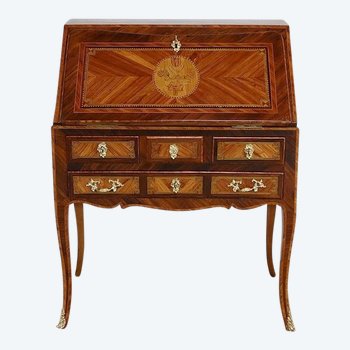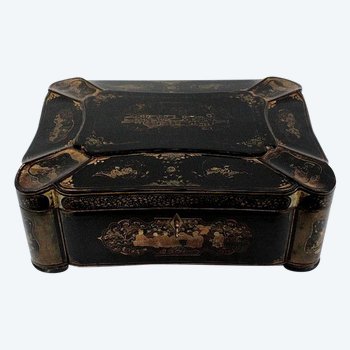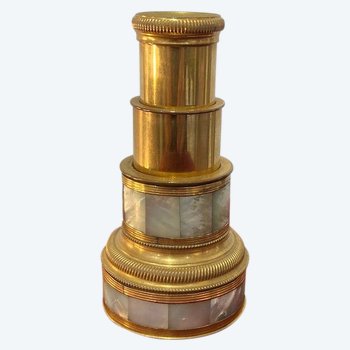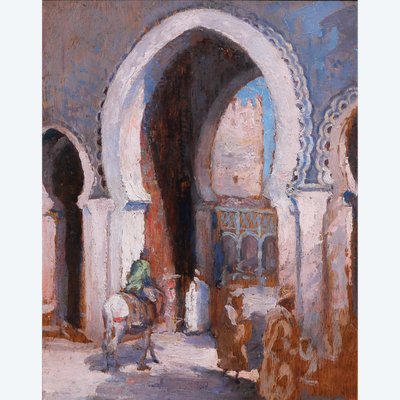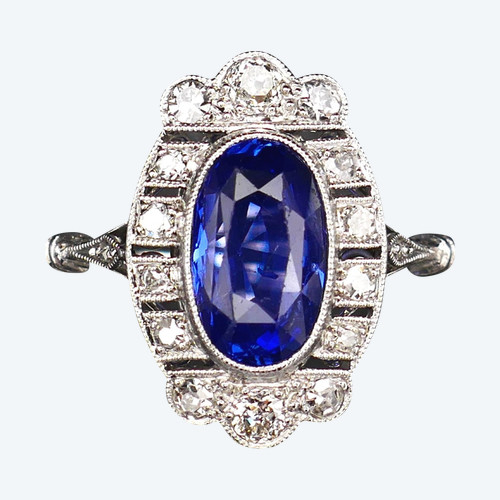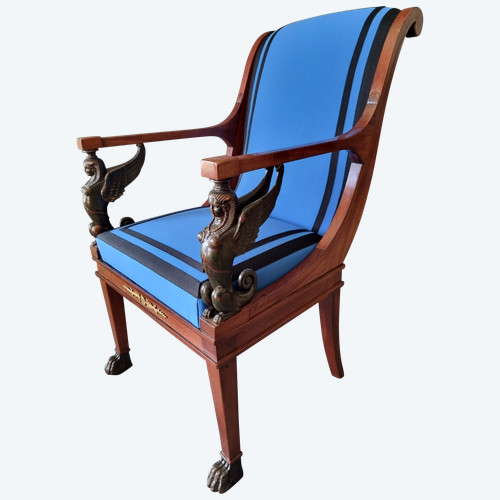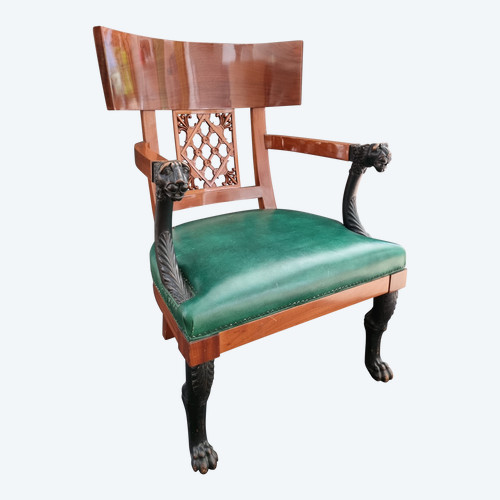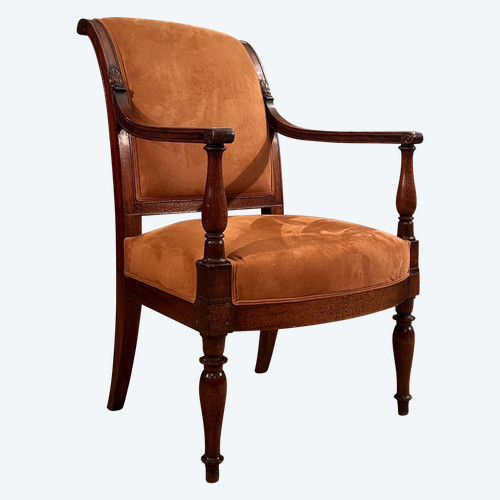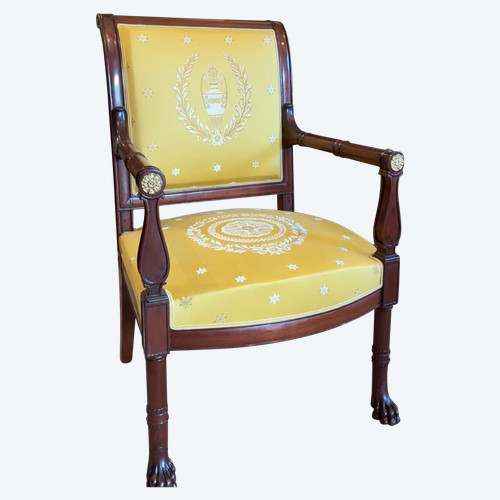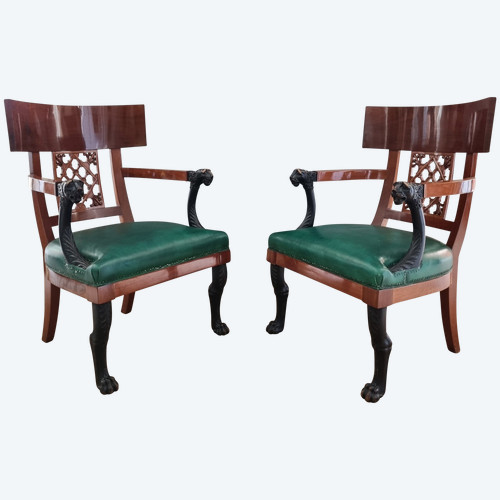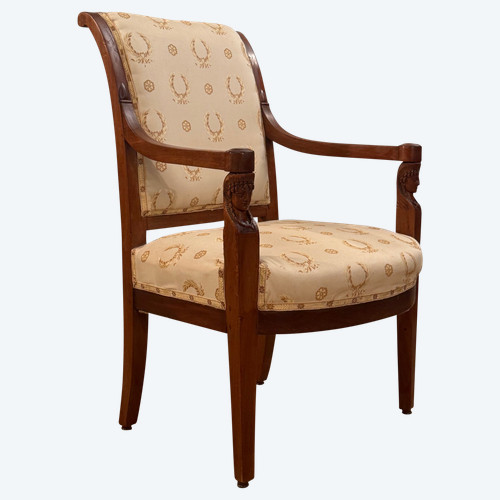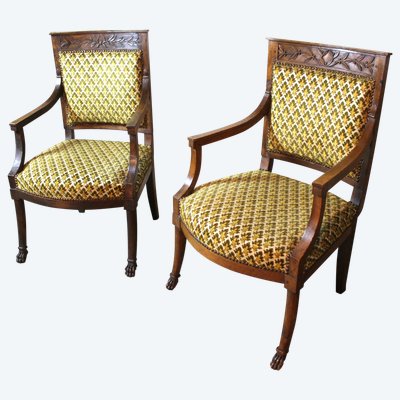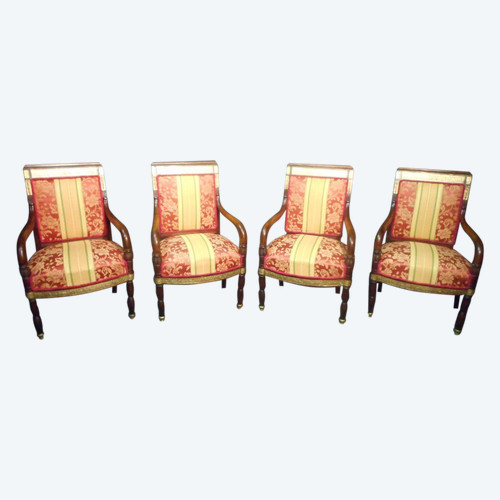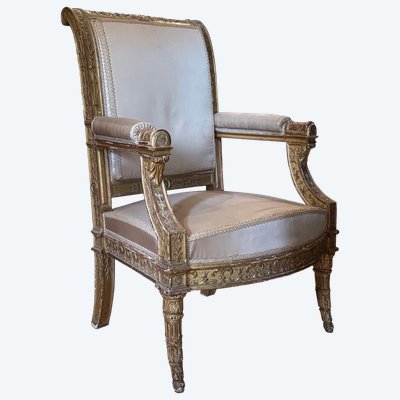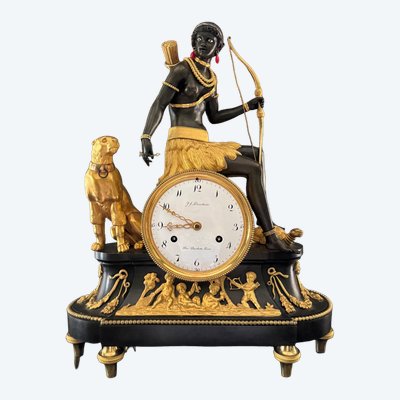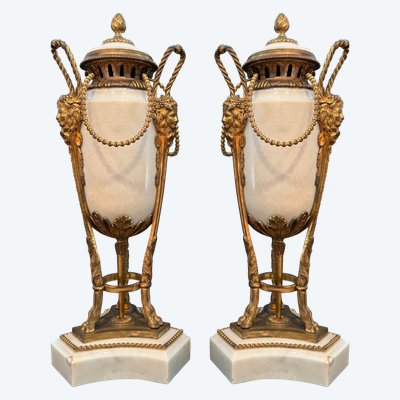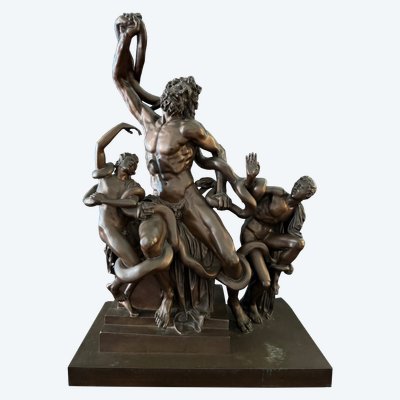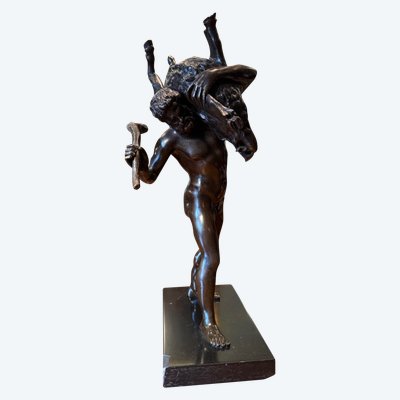This description has been translated and may not be completely accurate. Click here to see the original
Mahogany and mahogany veneer armchair with inverted backrest and sphinx-shaped armrests in carved wood with bronze patina. Sheathed front legs ending in claws, saber-shaped back legs.
Frame seat with matching cylindrical cushion.
Consulate period
These "Etruscan-style" armchairs, with their streamlined form, inverted back and saber legs, are part of the neoclassical movement of the late 18th century. Sphinxes or "chimeras" from Antiquity, whose models the artists found in Italy and Rome in particular, are used here as armrests. Elegant, slender and yet martial in appearance.
These same sphinxes adorned the furniture of Madame de Récamier, one of whose armchairs is illustrated in Léon de Groer Les arts décoratifs de 1790 à 1850, Office du Livre, Fribourg, 1985, p. 128 fig. 226 and p. 136 fig 248.
Juliette Récamier (1777-1849), wife of a wealthy Parisian banker, was one of the most famous and admired women of her time. Her interior, one of the first to be decorated in the "Etruscan" style, was considered a temple of taste and elegance. Decorative fashions were defined and adopted by society at the time.
Other models of this armchair with the same sphinxes supporting the armrest include:
- A stamped armchair by Henri Jacob, illustrated in Denise Ledoux Lebard, Le Mobilier Français du XIXème siècle, Editions de l'Amateur, Paris, 1989 p. 371
- A stamped armchair by Jacob Frères 1796-1803 (Mobilier National) ibid. p. 315.
- A bergère by Jacob Desmalter, with gilded wood sphinges and claw feet, is reproduced in Le XIXème siècle Français, collection Connaissance des arts, Hachette, 1957, p. 66 ill.1
-Another stamped example is illustrated in Jean Nicolay, L'art et la manière des ébénistes français, 1976, p. 244 fig. E.
- A pair of armchairs, stamped Jacob Frères rue Meslée, sold in Aurillac, Me Goolen, February 18, 2001
- another identical one in gilded wood:
https://www.daguerre.fr//lot/103723/11539082
Very good condition.
Recently restored by an art cabinetmaker.
Tapestry and horsehair in superb condition, identical to the Mobilier de Madame Récamier in the Louvre collections.
Stamped by Jacob Frères rue Meslée (1796-1803).
Consulate period, circa 1800.
Dimensions :
Height 92 cm
Width 57 cm
Depth 69 cm
Jacob Frères (1796-1803)
-- Based on "Les ébénistes du XVIIIe siècle de François de Salverte".
After the death of their father, Georges Jacob, his sons Georges and François-Honoré continued the business together under the name "Jacob Frères".
Both were born in Paris, the first on May 26, 1768, the other on February 6, 1770.
In the business they ran together until the end of the Consulate, the elder was in charge of commercial administration, the latter of technical matters.
The second son called himself Jacob-Desmalter, after a property his father owned in Burgundy. Lover of his craft, highly intelligent and gifted in the arts, he was to acquire a reputation among the men of his generation comparable to that of Boulle in the seventeenth century and Riesener in the eighteenth. Luck was with him from the start. On his return from Italy, General Bonaparte commissioned the Jacob brothers to furnish his bedroom on Rue Chantereine with a curious set of military furniture, the bed simulating a tent and the seats drums. These historic pieces, given to General Lefèvre-Desnouettes, were inherited by the Count of Harambure, who kept them in his Château de Boran (Oise).
Later, the First Consul called on the same cabinetmakers to refurnish the former royal residences devastated by the Revolution. Having previously produced works of very sober taste, valued above all for their character and purity of style, the Jacobs began to make pieces more richly adorned with sculptures and bronzes. Sometimes they also enhanced them with colored wood inlays and porcelain bas-reliefs imitating Wedgwood cookies. They were awarded a gold medal at the Year IX Exhibition, where they presented two commodes decorated with cameos. They outdid themselves at the following year's competition.
Their shipment included, among other pieces, several perfume burner tripods and a sumptuous carved and gilded wood console table, covered with an Italian mosaic.
These manufacturers used the brand name JACOB FRERES RUE MESLEE, printed on two lines in tall, spindly letters.
This mark can also be found on many pieces of cabinetwork in state collections, such as the desk built for the First Consul in the shape of a triumphal arch; it features among Josephine's souvenirs at the Château de la Malmaison.
The eldest of the Jacob brothers died prematurely on February 30.
Ref: QN7E1OLTA2

